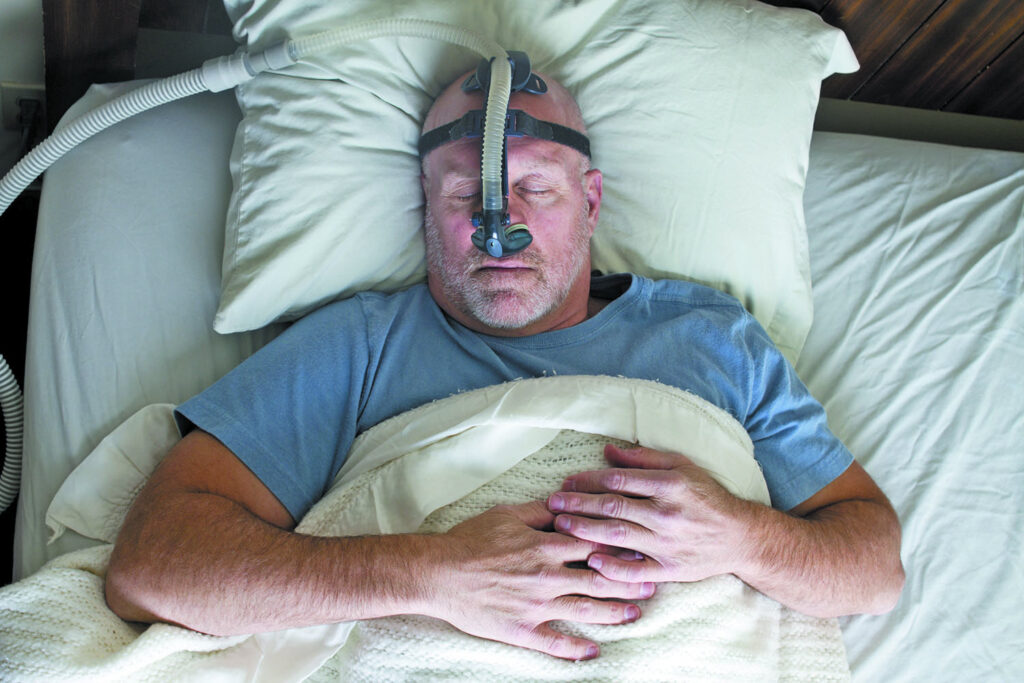Many individuals concentrate on the CPAP masks themselves when it comes to treating obstructive sleep apnea. The impact of a high-quality CPAP machine cannot be denied. It may prevent your airways from contracting so that you don’t have nightly sleep disturbances by continuously supplying pressured air throughout the night.
The CPAP masks you use in conjunction with the machine, however, is as crucial to it.
You need take into account a number of crucial aspects to choose the best cpap mask for your requirements. There is no one size fits all solution; ultimately, the best mask comes down to your tastes. You may avoid air leaks and other problems that can reduce the efficacy of your therapy by finding a proper fit.
Understanding the Various CPAP Masks Types
For the treatment of sleep apnea, there are three main categories of CPAP masks:
Mouth and nose are covered with full-face masks. They are the largest masks, however those who breathe through their lips when they sleep should use them. In order to lessen the sense of claustrophobia or visual impairment while wearing these masks, more basic designs have recently been produced.

The most popular kind of CPAP masks are nasal masks. These are tiny, triangular masks that fit over the nose and are secured by a variety of straps and cushions. The greatest candidates for these masks are those who sleep with their lips closed and breathe via their nose.
The smallest kind of masks are nasal pillow devices. The nostrils are where the nasal pillows are placed. They are a popular option for those who may experience claustrophobia wearing a bigger mask due to their tiny size. Additionally, those with small nose bridges or other facial traits that may make a nasal mask or full face mask leaky are thought to be suitable candidates for them.
Sleeping Posture
Your sleeping posture might have a big impact on the kind of mask that will be most effective for you. Depending on how you sleep, the mask may push uncomfortably on your face or result in air leaks.
Nasal pillows and nasal masks are often recommended for side sleepers. No matter how your head sits on the nasal pillow, the seal remains intact. To ensure a high-quality seal, users using bigger nose masks should utilize a soft, adjustable headpiece rather than a hard plastic one.
Although those who sleep on their back are more likely to have sleep apnea incidents, they may still choose any kind of mask. For this sleeping posture, full face masks, nose masks, and nasal pillows all function well and are unlikely to fall out.
It’s uncommon to sleep on one’s stomach and might be challenging to use CPAP masks while doing so. The ideal choice for stomach sleepers is often a nasal pillow since it won’t put as much pressure on your face and neck and is less prone to get displaced. You may need to purchase a separate cushion if you need to utilize another mask.
Whether or whether you turn over as you sleep is another thing to take into account. You should make sure the mask will work effectively even if you move about throughout the night and change positions. In these circumstances, it is usually advised to wear a mask with tubes that go up or over the top of the head.

Size Counts
You must make sure that your CPAP masks is the proper size in addition to choosing the best sort of mask for your requirements. Unfortunately, there isn’t a set size for masks in the business. For you to find the ideal fit for your face, some manufacturers give a range of sizing options, while other masks are bundled with a number of various cushion sizes.
The length of your nose’s bridge to its base, the breadth of its base and bridge, the size of your upper lip, the circumference of your head, and the space between your eyes are generally the measures that matter most for mask sizing.
Many suppliers will provide you a measuring tool to aid in taking these measures, along with a variety of dimensions for various mask sizes. The appropriate size will fit your face more comfortably and drastically lower the chance of air leaks and other issues.
Finally, keep in mind that you will need to adjust the straps after putting on the mask, even if it is the right size. The straps should be snugged up till your skin doesn’t feel unpleasant but they still provide a decent seal.
Choosing the Best Fit
Even after taking all of these things into account, you can still have problems with your new CPAP masks. You shouldn’t have to put up with excessive air leakage, blisters on your face, or an unpleasant fit. In fact, these problems may prevent your CPAP masks treatment from functioning. Consult your sleep physician if you have concerns about your mask and work with them to attempt to locate a replacement mask that will work for you.
You may have already heard your doctor or a rheumatologist discuss the word compliance. Being “compliant” entails operating your CPAP machine in the manner instructed. When you don’t adhere to your therapist’s advice, such as not wearing your mask often or not long enough, you are in “noncompliance.”
Within the first week of treatment, the majority of patients develop a pattern of either compliance or noncompliance. It’s not a simple effort to sleep with a mask pushing air into your mouth or nose, as anybody who has experienced it will attest. Unfortunately, many patients struggle with staying with CPAP masks therapy.
You’re not the only one who finds it difficult to wear your mask every night. Over 20 years of statistics reveal that up to 35% of individuals who are given CPAP masks treatments don’t follow through with the regimen. Some people use their machine for a short while every night, while others quit using it entirely.
For a variety of reasons, people have difficulty complying. They have trouble falling asleep with the forced air, the mask doesn’t fit well, or the tubes get clogged when they lie on their sides. Many individuals simply give up on treatment altogether, while others seek assistance, experiment with other masks, or change the surroundings.
It may be a huge concern if you are a pilot, a professional driver, or have an insurance company that monitors compliance. Most contemporary CPAP devices have sophisticated use monitoring capabilities. Precision tracking and automated transmission of this data to your doctor, insurance, or employer are also possible.
Failure to follow treatment instructions might have a major impact on your ability to maintain your employment or get insurance coverage for your equipment. Obviously, dealing with these financial consequences may be quite stressful when you’re trying to get used to treatment. The significant health consequences of noncompliance, however, are what many individuals find most concerning.
More to read: The 7 Sure Reasons You Won’t Qualify For LASIK Surgery
